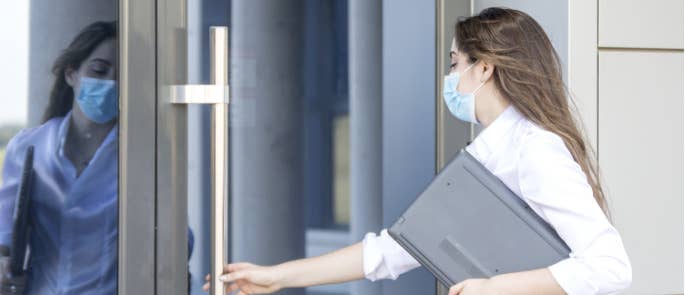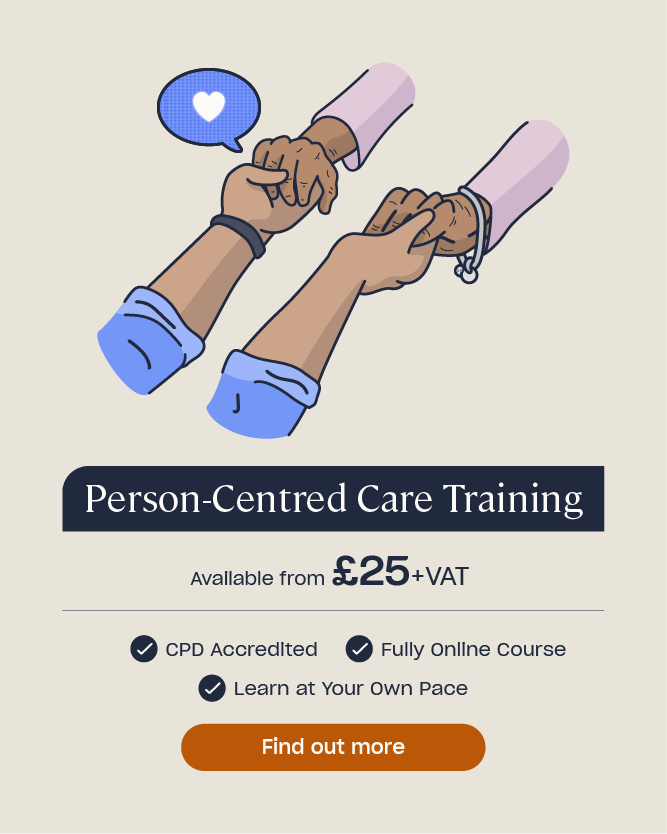What to Expect From a CQC Inspection
The CQC (Care Quality Commission) are the independent regulators and inspectors of health and social care services in England. They ensure services are providing safe, effective, compassionate, high-quality care and encourage services to improve if necessary.
CQC monitor and regulate care services through inspections and the results of their inspections, including a report and a rating, are then published online to help people choose the most suitable care for them. If you work in health and social care, having an understanding of the CQC and awareness of the standards they set will enable you to provide high-quality care.
What is the CQC Inspection Framework?
CQC inspect and regulate different care services in England including hospitals, GP practices and care homes. They have fundamental standards to set out how high-quality care and treatment should look and set a standard that the quality of care provided should never fall below.
All service users have the right to receive the following:

Types of Inspection
Inspections give CQC an opportunity to talk to staff and service users, observe care and look at the service’s records to see how care needs are managed. There are two different types of CQC inspections:
Comprehensive inspections: these are regular checks on health and social care services. They are used to ensure the service is providing safe and effective care, that is responsive to service users’ individual needs.
Focused inspections: these are smaller in scale but follow a similar process. They are carried out when a concern is raised through a comprehensive inspection or monitoring work. These inspections are also completed if there is a change in the care provider’s circumstances, for example if it has been taken over, there has been an acquisition or services have merged.
The frequency of inspections, size of the inspection team and whether the care service is informed that CQC are coming or not, depends on the type of service being inspected. Most inspections are unannounced so that CQC can get the most accurate view of how the service is running. They can visit at any time including evenings, weekends and during night shifts.
Inspections for some services must be announced to make sure the inspection does not disrupt the care being provided. Below are lists of the services that can expect announced inspections and those that can expect unannounced inspections.
Unannounced inspections will occur in:
- NHS acute and specialist trusts.
- NHS mental health trusts.
- NHS community health trusts.
- NHS ambulance service trusts.
- Residential adult social care services.
- Hospice services.
Announced inspections are necessary for:
- Specialist substance misuse services.
- NHS GP practices and out-of-hours services (four weeks before).
- Community adult social care services (48 hours before).
The lists above should only be used as a guide, as details may change depending on circumstances.

Frequency of Inspections
The frequency of inspections depends on the care service’s existing rating. If the latest report finds the service to be inadequate, CQC will revisit in six months to conduct another inspection. If the latest rating finds a service requires improvement, an inspection will be completed after a year. If the service is rated good or outstanding, their next inspection will be within five years.
CQC may also inspect any care service at any time, irrespective of the rating. If new information from people who use the service, reviews or complaints indicate a potential improvement or deterioration has been made, an inspection will be carried out. Additionally, if CQC are undertaking a review of services in a specific area, care services may be visited as part of the review.
To ensure care services are providing safe, effective, compassionate and high-quality care, CQC developed KLOEs. KLOEs are Key Lines of Enquiry, which refers to the different areas that CQC investigate when they do an inspection. Through observations, report reading and discussions with staff, CQC inspectors investigate five lines of enquiry to ensure the service is:
- Safe.
- Effective.
- Caring.
- Responsive to people’s needs.
- Well-led.
Inspectors use the key lines of enquiry as prompts to decide what to focus on during the inspection. The five KLOEs are broken down further into sets of questions that are often asked during the inspection. Using the KLOEs helps CQC ensure they are consistent in what they look at and that they focus on the areas that matter the most.
For example, when looking at whether the care service is safe, inspectors may ask the following questions:
- How are people protected from discrimination which might amount to abuse or cause psychological harm?
- How is safety promoted in the recruitment process?
- Do staff receive training in safety systems? Is it effective?
- Does the maintenance and use of equipment keep people safe?
- How do arrangements for handovers and shift changes ensure that people are safe?
- How does the provider ensure the proper and safe use of medicines?
- Are lessons learned and improvements made when things go wrong?
For more KLOEs prompts and examples of the questions care services could be asked, visit the CQC guidance for healthcare and social care.
What Should Care Providers Expect from a CQC Inspection?

CQC look at the quality and safety of care services. Their ratings are incredibly important and therefore all staff and service users should be aware of what to expect from an inspection.
When the inspector or inspection team arrive they will introduce themselves. The person greeting them should ask to see some ID and introduce themselves. Treat them like any other visitor by filling out the necessary visitor forms and signing them in, then show them to the member of staff in charge of the shift.
At the beginning of the inspection, the inspector or inspection team will usually meet with senior staff to explain who they are, the purpose of the inspection and how their findings will be communicated.
In acute hospitals, GP practices and GP out-of-hours services, the inspections begin with a presentation from the care provider giving their view of their performance.
As mentioned before, CQC use KLOEs to gather information and focus on specific areas during the visit. The inspectors gather information regarding the KLOEs by:
- Speaking to service users individually or in groups.
- Reading comment cards, complaints or concerns.
- Speaking to staff individually or in groups.
- Observing care and treatment.
- Reading individual care plans.
- Reviewing records.
- Inspecting the building and equipment.
- Reading documents and policies.
How to Prepare for a CQC Inspection
All members of staff working in health and social care should be familiar with CQC and know what to expect from their visits. Preparing in advance and ensuring staff understand the importance of CQC inspections will ensure CQC get an accurate reflection of the care provided in a service.
In addition, effective communication between staff and service users plays an instrumental role in health and social care. Ensuring communication is well established before, during and after the inspection will enable the care service to provide high-quality, person-centred care. It is also important to make sure staff and service users understand and are aware of what may happen during an inspection.
For further guidance, read our article on the importance of communication in health and social care.
Another way to prepare for a CQC inspection is to provide evidence of good practice, which could be through gathering examples in preparation for the inspection. CQC provide a compliance assessment tool on their website which can be used as a guide, or care services can create their own to demonstrate quality assurance and how the service uses feedback.
Ensuring staff are suitably trained, and that evidence of this can be provided, will prepare services for a CQC inspection. Being aware of the benefits of staff training, such as reducing staff turnover and ensuring staff are competent and confident in their role, will also help to prepare for any questions inspectors may ask regarding training.
All staff within health and social care should understand that continually developing knowledge and skillsets can enhance the quality of care provided.

The CQC may want to hear from service users and people involved in their care. Regularly gathering feedback is a good way to show the inspectors that the service value peoples’ opinions. Any evidence showing how feedback has been understood and acted on will also be valuable for demonstrating compliance to CQC.
Another way to prepare for CQC inspections is by submitting notifications in a timely manner throughout the year so CQC have a clear understanding of the service.
Health and social care providers must notify CQC about certain incidents, events and changes in their service, such as the death of a person who uses the service, serious injuries, abuse or allegations of abuse and any incidents reported to the police. The notifications should give clear information about each event and what action was taken to ensure good outcomes for service users and staff.
CQC Ratings and Inspection Reports
CQC inspections are incredibly important as they provide a complete understanding of the level of care being provided in a service. The visits take between two to five hours for the inspectors to gather information. Inspectors use a judgement framework document to decide whether the service is meeting regulations.
CQC provide the service with a rating of either outstanding, good, requires improvement or inadequate and their report regarding the service is published online.
Within ten working days after the inspection, a draft copy of the inspection report will be sent to the registered person. This may take longer if the inspectors were accompanied by an expert or a professional adviser as all findings need to be collated and discussed before drafting a report.
The care service then has ten working days to check that the report is factually accurate and have an opportunity to comment on CQC’s findings before the report is published. A final copy of the report will be sent 15 working days after the date the draft was first sent.

The inspection report lays out the findings and judgements made about the care service and also explains why and how the CQC carried out the inspection. The report then describes the impact of the care and treatment provided in the service, which can be minor, moderate or major, and the action they will take to make improvements.
If you are not meeting the regulations with a minor impact to service users or a moderate impact but it is the first time, the registered person needs to send a report showing how the service intends to meet the regulations and any actions they are going to take. The care service will be sent a template to follow when writing their report and will be set a timeframe to return the completed document.
If the breach of regulations is more serious and described as major, enforcement action will be taken. Not returning the form can also lead to enforcement action. Enforcement action is done in a proportionate way, taking into consideration the effect of the treatment on the public and those who use the services. This is of the upmost importance as it is done to eliminate poor quality care.
How to achieve ‘outstanding’
To get an overall outstanding rating, two of the five KLOEs must be rated outstanding. However, prioritising two KLOEs over the other three is not a productive approach. Instead, care services should deliver the best they can in all five areas and build on their existing strengths.
For example, if the care service has developed a particular procedure or uses a method that is unique to their service and will differentiate them from other services, it should be highlighted on inspection.
Furthermore, having an evidence file that is constantly updated with new information will make the inspector’s job easier. This could include:
- Policies and procedures.
- An organisation chart.
- Minutes from staff and senior meetings.
- Incident investigation reports.
- DBS records of staff.
- Risk assessments.
- Evidence of staff training.
- Equipment maintenance records, such as PAT tests.
- Compliance with data protection.
To achieve a good or outstanding rating from CQC, care services should consistently be providing high-quality care and treatment.
Continuous staff training, experience and compassionate care will reflect the high standards in a service. Only providing high-quality care when inspectors are in or only on the day of the inspection will not result in a positive report.
The CQC ensure social care services in England are providing safe, effective and high-quality care. If you work in health and social care, understanding the fundamental standards set by the CQC and the KLOEs will ensure you are prepared for an inspection.
Further Resources:
- Person-Centred Care Training
- Duty of Care in Health and Social Care
- What is the CQC and Why are KLOEs Important in Care?







